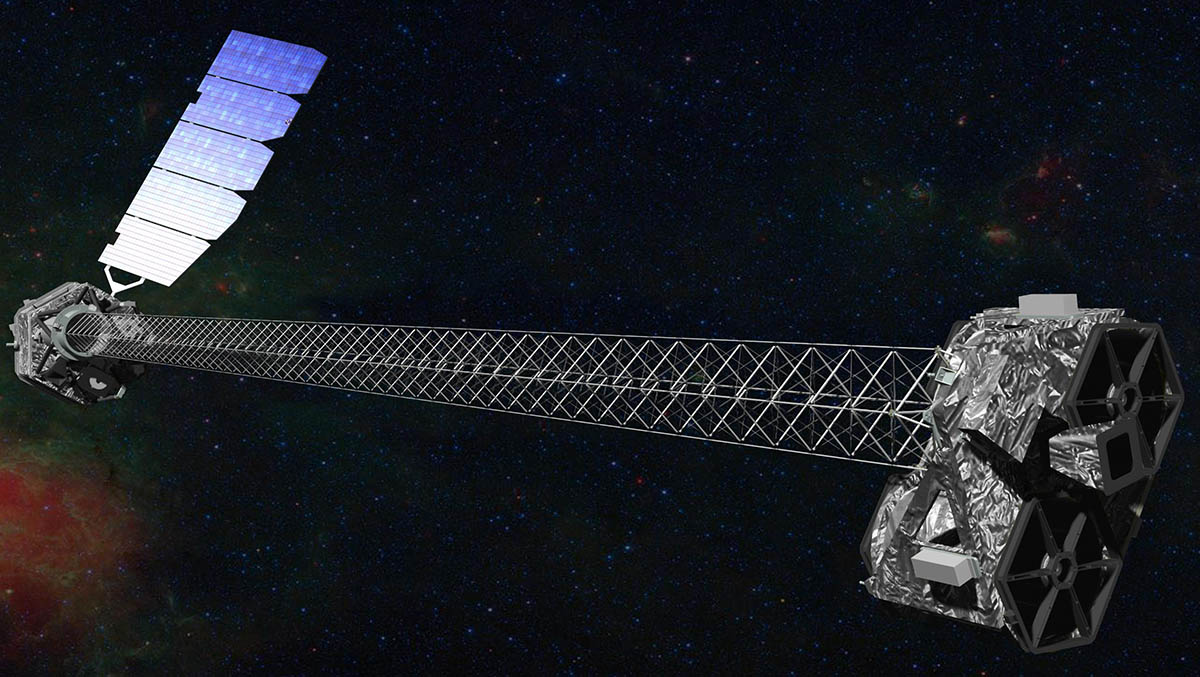Illustration of the NuSTAR spacecraft, which has a 30-foot (10 meter) mast that separate the optics modules (right) from the detectors in the focal plane (left). This separation is necessary for the method used to detect X-rays. (NASA/JPL-Caltech)
Home Illustration of the NuSTAR spacecraft, which has a 30-foot (10 meter) mast that separate the optics modules (right) from the detectors in the focal plane (left). This separation is necessary for the method used to detect X-rays. (NASA/JPL-Caltech) Illustration of the NuSTAR spacecraft, which has a 30-foot (10 meter) mast that separate the optics modules (right) from the detectors in the focal plane (left). This separation is necessary for the method used to detect X-rays. (NASA/JPL-Caltech)



